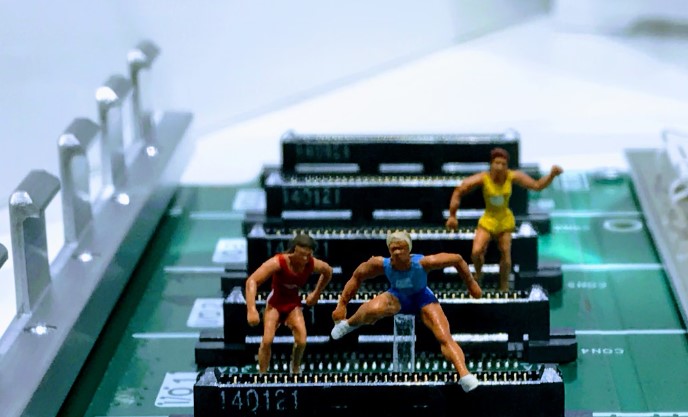Power today hinges not on diplomacy or tank deployments but on nanometers. Microchips—tiny yet strategically vital—shape the 21st century. Those who produce them control defense, AI, economic value, and global order. Those reliant on them are left with contracts or hope.
The U.S. is aggressively breaking free from this dependency. Its “reindustrialization” is no mere industrial policy but a geostrategic campaign reminiscent of Cold War mobilizations—subtle but ambitious. Beyond supply security, it’s about global leadership. In Washington, control over semiconductors is the new axis of world order.
Taiwan, within reach of Chinese missiles, produces 70% of the world’s advanced logic chips, primarily through TSMC. This is efficient in peacetime but perilous in crises. The U.S. response is relocation, control, and self-reliance. Biden has poured over $50 billion into subsidies, bolstered by tax breaks and legislation. Trump, meanwhile, threatens 100% tariffs on Taiwanese chip imports. Both approaches aim to reclaim a globalized technology.
It’s working. TSMC is building in Arizona, Intel in Ohio, Samsung in Texas. Over $450 billion in investments are underway, with dozens of major projects in progress. The U.S. acts while Europe merely promises, confronting geopolitical realities head-on.
The cost of decoupling is high. This reindustrialization is also fragile. U.S. semiconductor production costs are 30–50% higher than in Taiwan or South Korea due to stricter regulations, higher wages, and a lack of high-tech manufacturing expertise. A severe shortage of engineers and technicians—projected at 90,000 by 2030—further complicates efforts. Infrastructure is another bottleneck: precision machines come from the Netherlands (ASML), materials from Japan, and testing and packaging largely occur in Asia. U.S. ambitions face global dependencies that defy quick fixes, creating a mosaic of national goals tethered to global realities.
The U.S.-led CHIP4 alliance with Japan, South Korea, and Taiwan aims to stabilize supply chains and coordinate standards. Yet it remains a loose forum, not a true alliance. Partners hesitate to align fully with U.S. interests, prioritizing their own sovereignty. The U.S. counters with tariffs and market incentives, but trust is hard-won. Meanwhile, China escalates with export bans on critical materials, investments in 7nm and 5nm tech, and strategic acquisitions, acting with long-term resolve.
Europe is drifting while the U.S. and China act. The 2022 European Chips Act aimed to make Europe a global semiconductor player, but by mid-2025, it feels like a belated reaction. While Washington builds and subsidizes, Brussels obsesses over environmental standards and red tape. Europe has potential—ASML’s lithography dominance, Infineon, STMicroelectronics—but lags in sub-5nm tech critical for AI, supercomputers, and advanced weapons. Addressing the looming 90,000-worker shortage requires specialized training and talent repatriation. Europe must co-invest in production to secure influence and avoid becoming a pawn in the U.S.-China tech race.
Microchips are the 21st century’s oil, a lever of geopolitical power. The U.S. recognizes this, pursuing control with determination. Europe should see the chip war as a battle for the new world order because those who produce, rule.
The post Will the Chip War Shape World Order? appeared first on Free West Media.
Click this link for the original source of this article.
Author: Dan Roodt
This content is courtesy of, and owned and copyrighted by, http://freewestmedia.com and its author. This content is made available by use of the public RSS feed offered by the host site and is used for educational purposes only. If you are the author or represent the host site and would like this content removed now and in the future, please contact USSANews.com using the email address in the Contact page found in the website menu.








